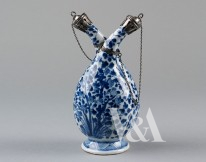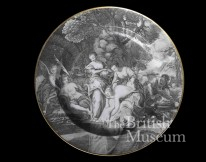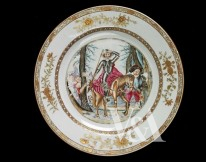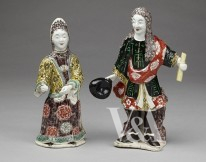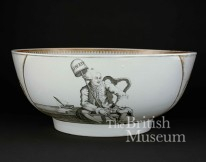3 Special Orders
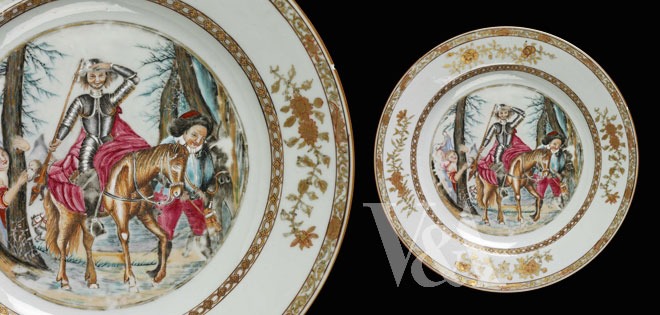
By the turn of the eighteenth century, increasing quantities of Chinese porcelain with special shapes and designs reproduced from European models and sources were commissioned in China. Prints, bookplates and banknotes, as well as coins and objects in ceramics, glass, silver and pewter were taken to China and passed to the workshops to be copied by potters and decorators. The designs included families’ coat of arms and popular religious, mythological and literary themes, as well as scenes from current political events.
At first porcelain designed to European specifications was made and decorated in Jingdezhen, but by the mid eighteenth century porcelain was also transported undecorated to Guangzhou and enamelled in local workshops, where they were refired in small muffle kilns. Commissions for ‘special orders’ were received by Chinese middle men as soon as the ships arrived in Guangzhou in the summer and completed in Jingdezhen or Guangzhou workshops by the time Europeans were ready to leave again.
Special orders (or chine de commande) represented only a tiny part of the total quantity of porcelain exported in bulk to Europe by the companies. The commissions were privately managed by ships’ captains and trading officers (‘supercargoes’), who were able to increase their modest basic salary with this highly profitable trade.
